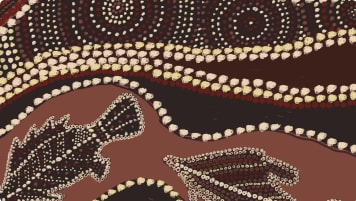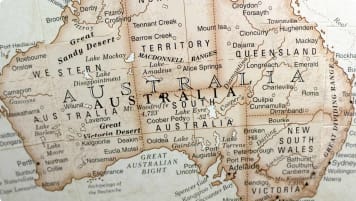David Unaipon
David Unaipon made several significant contributions to Australian society in scientific ideas, literature, and Aboriginal affairs. An escorted small group tour for mature and senior travellers shares his contribution in outback Australia and the cities.
27 Jan 21 · 8 mins read

David Unaipon
By Marco Stojanovik
David Unaipon (1872-1967) was an Aboriginal Australian man of the Ngarrindijeri people, well known as an inventor, lecturer, writer and campaigner. A dignified, highly gifted, and articulate man, Unaipon made several significant contributions to Australian society in scientific ideas, literature, and Aboriginal affairs. In doing so he helped to transform many negative notions and stereotypes of primitive Aboriginality that still existed in White Australia in the 20th century.
This article explores the life achievements of Unaipon. It is part of a continuing series of pieces on people, art, ancient landscapes, and Aboriginal and Torres Strait Islander settlement of Australia. As part of our commitment to understanding and sharing our knowledge of the history, culture, and landscapes of Australia, an appreciation of Indigenous Australian activity is a key facet of learning on several of Odyssey Traveller’s small groups tours in Australia. These tours are designed for mature and senior travellers, both for couples and the solo traveller.
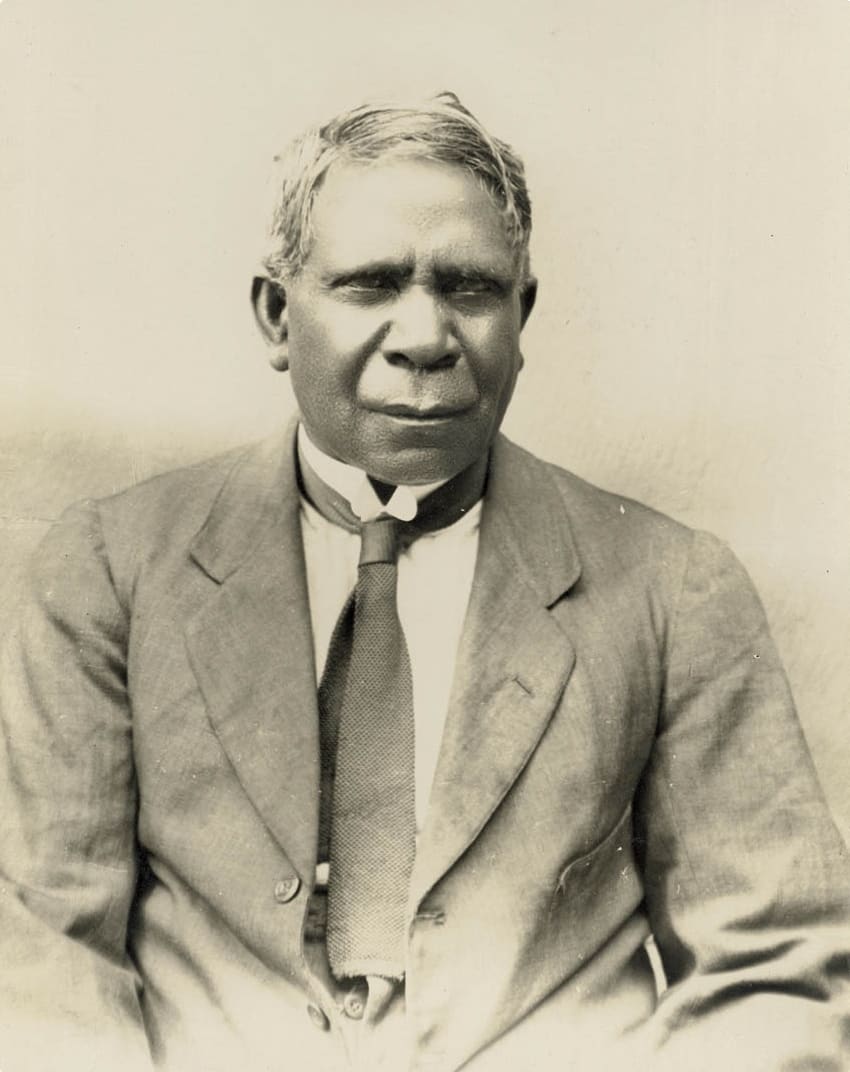
Early Life
David Unaipon was born on 28 September 1872 at the Point McLeay Mission in the Coorong region of South Australia, just 82 km southeast of Adelaide. He was the fourth of nine children of James Ngunaitponi and his wife Nymbulda. Both his parents were Yaralde people from the Lower Murray River, his father the first Aboriginal convert of the congregational mission, which has been established by the Aborigines Friend Association (AFA) in 1859.
Unaipon attended the mission school from the age of 7, quickly becoming known for his intelligence. In 1887, the former secretary of the AFA, stated: “I only wish the majority of white boys were as bright, intelligent, well-instructed and well-mannered, as the little fellow I am now taking charge of.”
At age 13, he left school to work as a servant for C.B. Young, patron of the AFA. who actively encouraged his interest in classical literature, philosophy, science and music. Back at Point McLeary from 1990, he read widely, was appointed as the mission organist, and apprenticed to a bootmaker.
He soon grew frustrated at the lack of work for educated Aborigines at mission settlements though and so moved to Adelaide in the 1890s. However, he was denied of opportunities because of the colour of his skin. Rather than finding an educated profession, he was forced to take a job as a storeman for an Adelaide bootmaker before retuning to work as book-keeper in the Point McLeay store.
In 1902 he married Katherine Carter, a Tangani woman from the Coorong who worked as a domestic servant. They had a son a year later, but the marriage was reportedly unhappy and Unaipon travelled frequently.
Eventually, in the early 1900s, he was employed by the AFA to travel and preach widely in seeking support for the Point McLeay Mission. A devout Christian, he considered the belief system to be compatible with his Aboriginal spirituality.
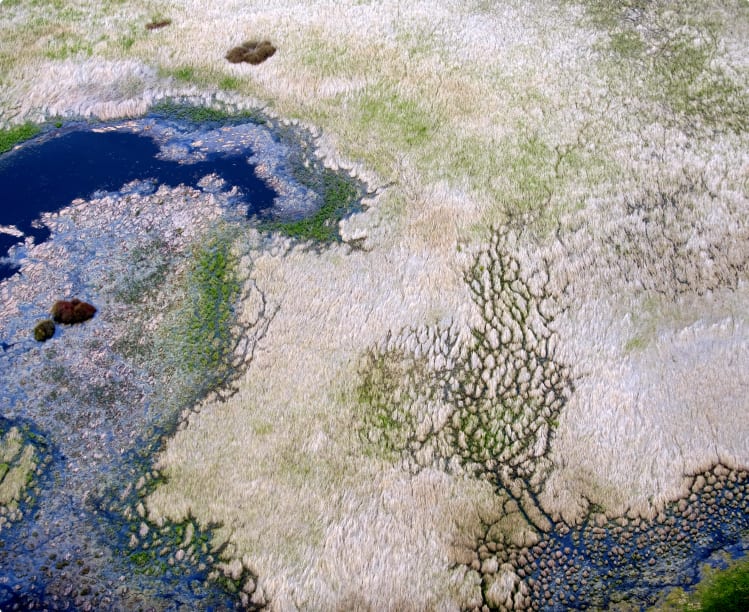
Inventor
Having developed a keen interest in science and engineering from an early life, Unaipon kept up investigations into the fields for most of his life as an inventor. He was particularly obsessed with discovering the secret of perpetual motion, conducting numerous experiments to attain the discovery (still attempting it by his seventy-ninth year).
In the course of doing so, he developed a number of devices including an improved mechanical hand tool for shearing sheep, now the basis of modern mechanical shears. In 1909, he placed a provisional patent on the modified shearing tool but couldn’t afford to get it fully protected. So, when his design was later widely adopted, he was unable to make any money from it and the patent eventually lapsed.
This was a common theme with for Unaipon with all 19 provisional patents that he placed on his inventions lapsing before he was able to gain financially from them. Included among these inventions were a centrifugal motor, a multi-radial wheel, and a mechanical propulsion device.
He also came to be known as ‘Australis’ Leanardo da Vinci’ for his mechanical ideas. Among these was a basic design for a helicopter in 1914, 22 years before the first operational helicopter in 1936, based on the principle of how the boomerang spins through the air. And he conducted publicized research into the polarisation of light.
Lecturer & Writer
Unaipon’s employment with the AFA collecting subscription money allowed him to travel widely around South Australia and Victoria, where he delivered sermons and lectures at churches and schools. Through these travels he encountered many intelligent people sympathetic with the cause for Aboriginal rights, providing him the opportunity to further lecture on Aboriginal legends and customs and about his people’s future.
His social and political message was conservative, focusing largely on self-improvement. He reflected the AFA’s view that Aboriginal people would benefit by joining mainstream Australian society assisted by enlightened paternalism. He considered the embrace of Christianity as the most straightforward way to do so, a view that set him apart from many of his fellow Aboriginals.
While travelling through southern Australia, he also began to compile his versions of Aboriginal legends. These were influenced by his interest in Aboriginal and European mythology and embellished by his romantic view of the past. They stories were published as the short booklets Hungarrda (1927), Kinie Ger—The Native Cat (1928) and Native Legends (1929), making Unaipon the first published Aboriginal writer.
However, the publisher Angus and Rovertson, sold most of his stories to William Ramsay Smith, who published an edited version as Myths and Legends of the Australian Aboriginals (1930) without any attribution to Unaipon. The book went on to be a well-acclaimed work and has since been republished in its original form under the correct author’s name as Legendary Tales of the Australian Aborigines.
Unaipon published poetry in the 1930s and more legends in the 1950s and 1960s. In all, his stories are varied and rich in detail, mixing the routine and the ritual. Educational chapters feature are alongside the myths, every day activities such as hunting and sport interspersed with stories about Creation.
His writing prose shows the influence of 17th-century English writers John Milton and John Buyan and reflects his obsession with correct English. Indeed, while speaking he tended to use classical English rather than that in common usage. A gifted writer and master of the English language, he subverted popular stereotypes of an inarticulate and primitive Aboriginality, embodying the potential – albeit in White terms – for Aboriginal advancement.
Unaipon’s Work in Aboriginal Affairs
Unaipon was also involved in advocating on political issues concerning Aboriginal issues as a strong supporter of self-determination. He appeared to give evidence before numerous royal commissions into the treatment of Aborigines, and in 1928-29 he assisted the Bleakley inquiry into Aboriginal welfare working as a researcher and witness. By this stage, he had become the best-known Aborigine in Australia, accepted as his people’s spokesman.
Around this time, he also publicly supported the utopian scheme for a model Aboriginal state, proposing a separate territory for Aborigines in central and northern Australia. His involvement in the movement may have contributed to his arrest on vagrancy charges.
In 1934 he lobbied the Australian Government to take over responsibility for Aboriginal affairs from its constituent states and proposed that South Australia’s Chief Protector for Aborigines be replaced by an independent board.
In all, Unaipon was inclined towards gradual change, believing that Aborigines could transition to European society if facilitated by proper education. This view was supported by the AFA and later expressed in the Commonwealth’s assimilation policy.
Such a stance, however, put him into conflict with other Aboriginal leaders. Unaipon criticized attempts to insulate Aboriginal people by creating reserves and disagreed with the Australian Aborigines’ League’s National Day of Mourning on Australia Day, 1938. He thought the protests would damage Australia’s reputation abroad and cement a negative public opinion of Aborigines.
Commemorations
Unaipon died on 7 February 1967 at the age of 95 and was buried in Point McLeay cemetery. During his life and posthumously, he received numerous awards and recognitions in commemoration for his work.
In 1953 he received a Coronation medal for his many achievements. In 1985, he was posthumously awarded the FAW Patricia Weickhardt Award for Aboriginal writers. And in 1988, the University of Queensland started the annual David Unaopon Award, which is given to Aboriginal writers to have their books published.
In perhaps the most symbolic recognition of his impact, since 1955 Unaipon’s portrait has featured on the Australian $50 note.
Tour of Aboriginal Australia
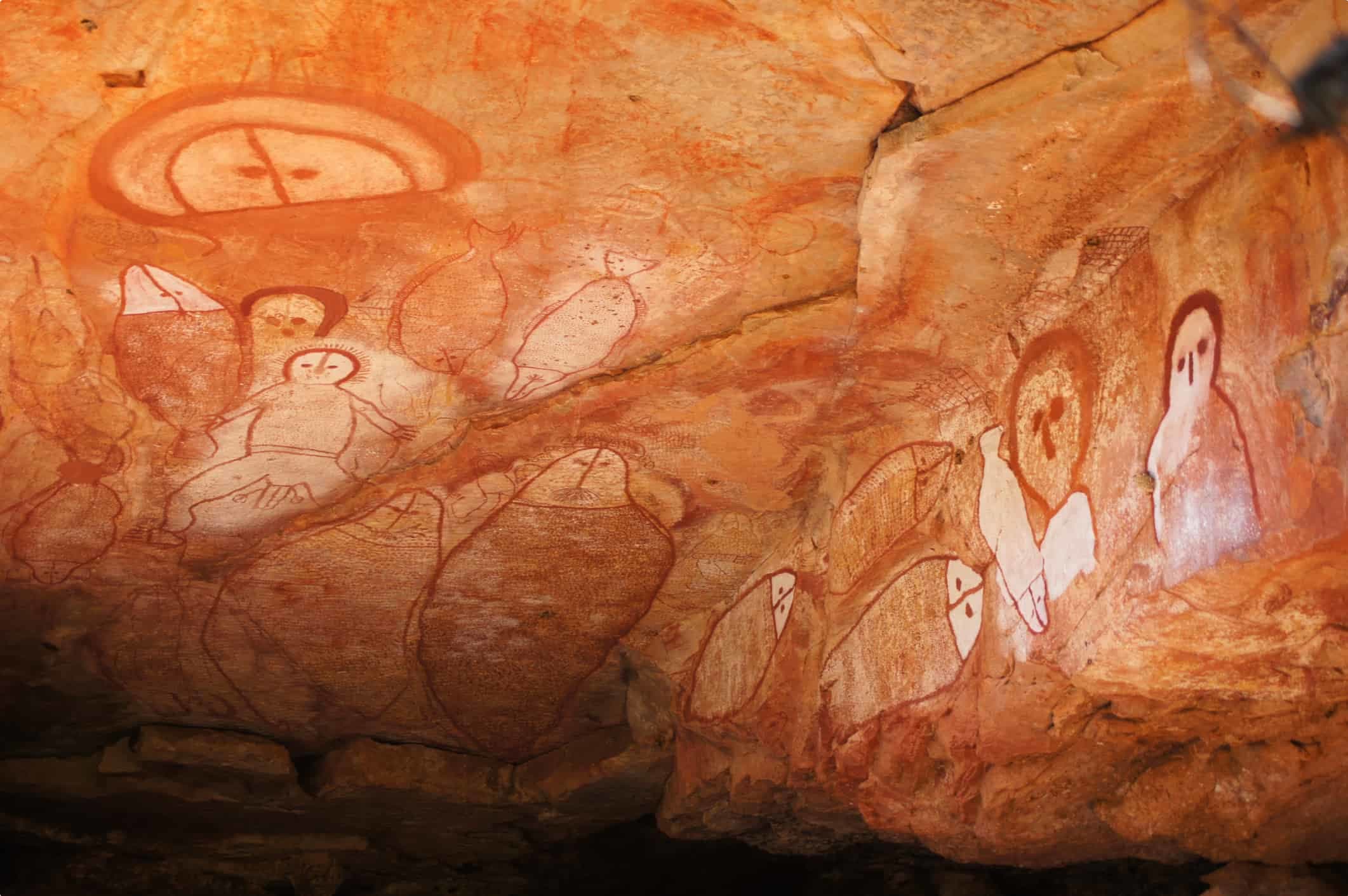
You can learn about songlines and various aspects of Aboriginal culture, history, and traditions as part of Odyssey traveller’s new small group tour exploring Alice Springs and Uluru-Kata Tjuta National park. This tour lasts for 13 days, delving into the colourful landscapes and impressive landforms, Aboriginal culture, and rich wildlife of the southern portion of the Northern Territory. Along our tour we take time to learn about the geology and biodiversity of the various national parks we visit as well as the different vibrant Aboriginal histories, cultures, traditions, and art styles.
Alice Springs, or simply ‘Alice’ as it is known now colloquially, is famous for the ochre sands and mountain ranges that surround it, its many Aboriginal art galleries, and cultural events. The Arrernte people, who have lived in the Central Australian Desert in an around what is today Alice Springs for thousands of years, still today sustain a strong connection to this land and a rich culture.
Both Uluru and Kata Tjuta landforms have sacred significance to the Anangu, the local indigenous people who have inhabited the land for more than 22,000 years. They believe both sites contain spirit energy, with the surrounding areas the home of their ancestors and inhabited by many ancestral ‘beings’.
Other key highlights along the tour include trips to the spectacular canyons of Watarrka National Park, Finke Gorge National Park (home to a diverse range of rare plant species), the Aboriginal Community of Hermannsberg (once home to the great Aboriginal artist Albert Namatjira), and the outstanding landscapes of both the West and East McDonnel Ranges (ancient landscapes sculptured over time by climatic elements and today refuges for many plants and animals).
Travellers with an interest in learning more about the Aboriginal heritage of Australia may want to check out our various outback Australia tours.
These include visits to:
- Archaeological sites including the Madjedbebe rockshelter and the extensive collection of ancient Aboriginal rock art at Kakadu Natinal Park as part of our tour of Kakadu and Darwin
- The ancient indigenous sites including Lake Mungoand the Budj Bim Cultural Landscape as part of our tour of the Southern States of Australia;
- The important cultural site of Wilpena Poundon our tour of the Flinders Ranges;
- The ancient rock art in the Kimberley, Western Australia;
- The Brewarrina Fish Traps in our outback Queensland tour;
Every Odyssey guided tour is designed especially for mature and senior travellers, who want an authentic and informed experience of their destinations. Our tours aren’t the typical tourism Australia holiday – Blue Mountains, the Great Barrier Reef, and the penguin parade on Port Phillip Island. Instead, we pride ourselves on getting of the beaten path and making you think about Australia and New Zealand in new ways. We move in genuinely small groups – usually 6-12 per tour – and all tours are cost-inclusive, encompassing accommodation, attraction entries, and transport. For more information, click here, and head to this page to make a booking.
Articles about Australia published by Odyssey Traveller:
- Uncovering the Ancient History of Aboriginal Australia
- Aboriginal History and Culture of Kakadu National Park
- Aboriginal Land Use in the Mallee
- Understanding Aboriginal Aquaculture
- The Kimberley: A Definitive Guide
External articles to assist you on your visit to Australia:
- The Story of Aboriginal Art
- Indigenous songlines: a beautiful way to think about the confluence of story and time
- The Dreaming
- Meaning of land to Aboriginal People
- Aboriginal History
Updated December 2021
Related Tours

days
Jun, Jul, Sep, Feb, Mar +1Darwin and Kakadu small group tour
Visiting Northern Territory
Explore and learn as part of a small group tour for seniors on this package tour to Darwin and Kakadu National park, a UNESCO world heritage site. This program also visits Arnhem land. Our focus is on ecology, landscapes and history on this 14 day program in the far north of the Northern Territory.

days
Mar, May, Aug, Sep, Oct +2Small group tour of World Heritage sites and more in the Southern States of Australia
Visiting New South Wales, South Australia
Discover the World Heritage Sites of the southern states of Australia travelling in a small group tour. A journey of learning around the southern edges of the Murray Darling basin and up to the upper southern part of this complex river basin north of Mildura. We start and end in Adelaide, stopping in Broken Hill, Mungo National Park and other significant locations.

days
Apr, Jun, Aug, Nov, Mar +2Exploring Alice Springs and Uluru-Kata Tjuta National park by Motorbike
Visiting
Explore on a Motorbike tour in the Outback and learn about historic Alice Springs, The MacDonnell ranges, and Uluru-Kata Tjuta national park. This escorted small group Motorbike tour for mature and senior travellers, travelling as a couple or solo travellers also visits the Hermannsburg Lutheran mission plus Henbury meteorite site learning about the Aboriginal outback and contemporary art.

days
Apr, May, Jun, Jul, Aug +3Small group tour exploring Alice Springs and Uluru-Kata Tjuta National Park
Visiting Northern Territory
Explore and learn about historic Alice Springs, The MacDonnell ranges, and Uluru-Kata Tjuta National Park. This escorted small group tour for mature and senior travellers, travelling as a couple or solo travellers also visits the Hermannsburg Lutheran mission plus Henbury meteorite site learning about the Aboriginal outback and contemporary art.
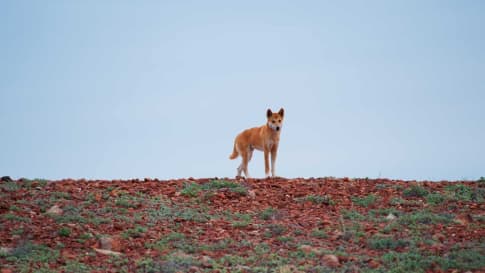
days
Apr, May, Jul, Aug, Oct +2Small group tour of Australia's Flinders ranges
Visiting South Australia
Escorted small group tour of the Flinders range in South Australia from Adelaide. Learn about Coober Pedy, Wilpena pound and water system of Lake Eyre as we explore and learn also about the history of the people who explored the Flinders.

13 days
May, Jun, Jul, Aug, SepSmall group tour of Australia's Kimberley
Visiting Western Australia
Escorted small group tour of the Kimberley. We explore and visit The Bungles, Bell Gorge, Mitchell plateau & Halls Creek in the dry season. Amazing landscapes intertwined with Aboriginal communities resident more than 45,000 years.
From A$15,390 AUD
View Tour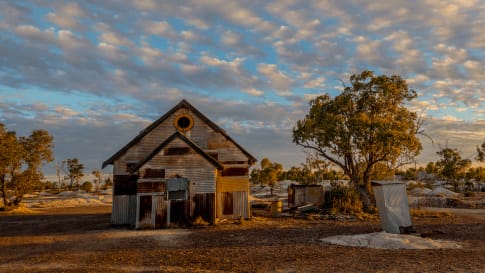
days
Mar, Apr, May, Jul, Aug +2Small group tour of outback Queensland
Visiting New South Wales, Queensland
To Dubbo and back, this small group tour takes you to learn about the Brewarrina fish traps, we travel high up into North Queensland to see the Dinosaurs of Winton and incredible Aboriginal rock art at Cathedral gorge and learn about opal mining and the history of Lightning ridge.
Articles

Aboriginal Art
Senior and mature couples and solo travellers remain curious but often informed about the role Aboriginal art plays in the indigenous community and the various styles. This article seeks to provide a platform for this collection of small group tours of upto 15 people into the Australian outback where often Aboriginal art styles are encountered.
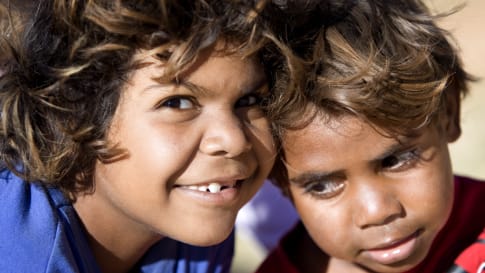
Aboriginal Kinship systems
Article about Aboriginal kinship to assist small group tours in Australia understanding Ancient aboriginal society and the contemporary view. Kinship influences the relationships including aboriginal trading routes.

Ancient Aboriginal trade routes of Australia
Ancient Aboriginal trade routes of Australia Trade was a central part of life for Aboriginal people prior to the British settlement of Australia. Trading routes criss-crossed the nation, dispersing goods, information, technologies and culture thousands…
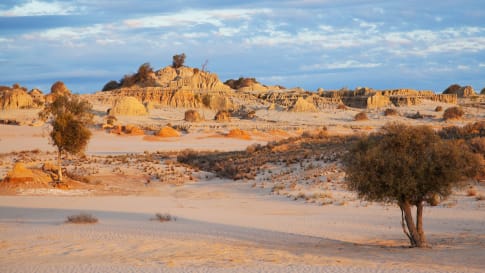
Mungo Man and Mungo Lady, New South Wales
Part of a small group tour of World heritage sites on Victoria, NSW & South Australia for mature and senior travellers. Learn and explore in the Mungo National park about Aboriginal settlement and the fauna and flora of this National park.
Questions about Australia for senior travellers
Questions About Australia for senior travellers Odyssey Traveller specialises in crafting unforgettable experiences for senior and mature-aged travellers interested in learning as a couple or as a solo traveller when they travel. Providing adventure and…

The Arrival of Aboriginal Australians on the Continent
Tracing Aboriginal history via an outback small group tour for mature and senior couples or solo travellers provides an intriguing learning platform about Australia, rock art, trading and culture that traces a history possibly some 120,000 years ago.

The Australian Outback: A Definitive Guide
Explore learn and consider what is the outback in this article. For mature and senior travelers considering joining a small group package tours into the outback to see, learn and explore about this unique place, not only the landscape but the Aboriginal approach to living. On each of the tours for couples and the single traveler you learn something different but fascinating, from Outback Queensland, the Flinders, Broken Hill and the Kimberley and the wildflowers all contribute to this question, what is the outback?
